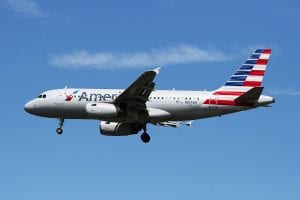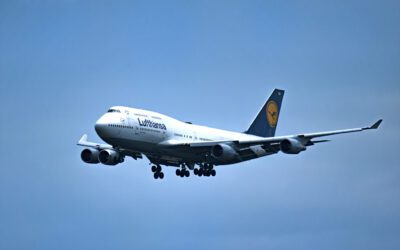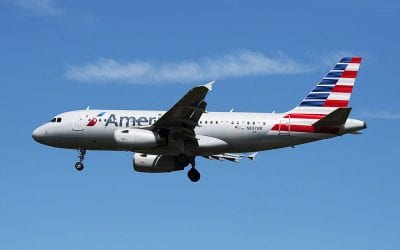Make the Saracini Enhanced Aviation Safety Act law for better air travel security
 Since the September 11 al-Qaeda attacks in which 2,996 died and 6,000 more were injured, the U.S. and the rest of the world have spent billions in the name of air travel security.
Since the September 11 al-Qaeda attacks in which 2,996 died and 6,000 more were injured, the U.S. and the rest of the world have spent billions in the name of air travel security.
The question I’ve been asking since those attacks is, “Has the U.S. government been spending its time, effort and those billions well.
Let’s peek at what the U.S. has done, in part, to improve air travel security.
TSA (Transportation Security Administration) confiscates 12-ounce containers of liquids packed in carry-ons, but permits passengers to have four, 3-ounce containers of liquids in those same carry-ons. TSA spends $170K each for MMW (millimeter wave) full-body scanners that can’t detect explosives secreted in the location that’s been most used by smugglers for centuries — the rectum. Millions of Americans have paid to be vetted for enrollment in TSA’s Precheck program so they can use “less rigorous,” faster airport security lines, but TSA allows anyone into the PreCheck lines when air travel security becomes busy.
Air travel security efforts are wasting big money.
If you’ve sat in the front of commercial airliners on flights of more than a couple of hours, you’ve probably witnessed the following scene:
While the plane is at cruising altitude, a flight attendant will take a beverage cart and use it to block the aisle leading to the forward lavatory and the cockpit door on a narrow-body aircraft. On a wide-body plane it could be two flight attendants with carts so both aisles are blocked. When someone in the lavatory is finished, they are permitted past the blockade to go to their seat. Once the lavatory is empty, a flight attendant will inform the pilots.
The cockpit door will open and a pilot will emerge. The cockpit door will be immediately shut and relocked. That takes about five seconds.
The pilot will enter the lavatory. When finished, the pilot, possibly with some food or drink supplied by a flight attendant, will quickly reenter the cockpit, shut and lock the door.
While the pilot’s outside of the cockpit, a flight attendant stands guard behind the cart, blocking the aisle to prevent a terrorist from breaching the cockpit door for the few seconds it’s open. No one is permitted to approach the area.
Air travel security needs less security theater and more barriers
When I first saw this scene play out, I thought, “security theater” and that a powerful person could overwhelm the blockade and breach the cockpit. The timing wouldn’t be easy, but it could be done. Since then, I’ve seen the scene over and over again and still believe it’s “theater,” as a dedicated terrorist could get through.
In a 2017 heavily redacted report issued by the U.S. Department of Transportation’s Inspector General, speaking of the times during flights that the cockpit door must be opened, it states,
“FAA has not effectively mitigated certain identified cockpit security vulnerabilities and limitations with existing countermeasures.”
To address the problem of cockpit security when the cockpit door is opened during flights, the Air Line Pilots Association, International called for aircraft to be equipped with lightweight secondary cockpit barriers to replace the beverage carts with flight attendants. They believe a well designed barrier can prevent a terrorist from getting into a cockpit while the door is open. The barrier would only need to keep an intruder out for five seconds or so. Within that time, the cockpit door could be closed and locked with at least the remaining pilot safe to handle the plane.
The Saracini Aviation Safety Act should apply to all aircraft
The Saracini Aviation Safety Act of 2018, named after Captain Victor J. Saracini, who was killed on 9/11 when his United Airlines flight 175 was hijacked, became law as part of the FAA Reauthorization Act of 2018. It mandates that a lightweight, wire-mesh gate be installed as a secondary barrier between the passenger cabin and the cockpit door on new commercial aircraft. The gate would be used to block access to the area while the cockpit door is temporarily open and during the time pilots are in the area to use the lavatory, get food and beverage, etc.
There is a problem with the new law. It doesn’t require the installation of the secondary barrier in existing aircraft. To remedy that, the Saracini Enhanced Aviation Safety Act has been proposed. It would extend the secondary barrier requirement to existing commercial aircraft.
Bruce Schneier, an internationally renowned security expert who was called a “security guru” by The Economist, has stated,
“The only useful airport security measures since 9/11 were locking and reinforcing the cockpit doors so terrorists can’t break in, positive baggage matching, and teaching the passengers to fight back. The rest is security theater.”
The secondary barrier can be a difference-maker. Studies have shown that they are inexpensive but effective. Airline pilots support their installation. Congress should pass and the President sign the Act into law as soon as possible. That would require that all commercial aircraft have the secondary barrier. This would enhance one of the few air travel security measures which actually make us safer — locked, reinforced cockpit doors.
(Image: American Airlines A319 landing at Philadelphia International Airport. Copyright © 2018 NSL Photography. All Rights Reserved.)
After many years working in corporate America as a chemical engineer, executive and eventually CFO of a multinational manufacturer, Ned founded a tech consulting company and later restarted NSL Photography, his photography business. Before entering the corporate world, Ned worked as a Public Health Engineer for the Philadelphia Department of Public Health. As a well known corporate, travel and wildlife photographer, Ned travels the world writing about travel and photography, as well as running photography workshops, seminars and photowalks. Visit Ned’s Photography Blog and Galleries.



